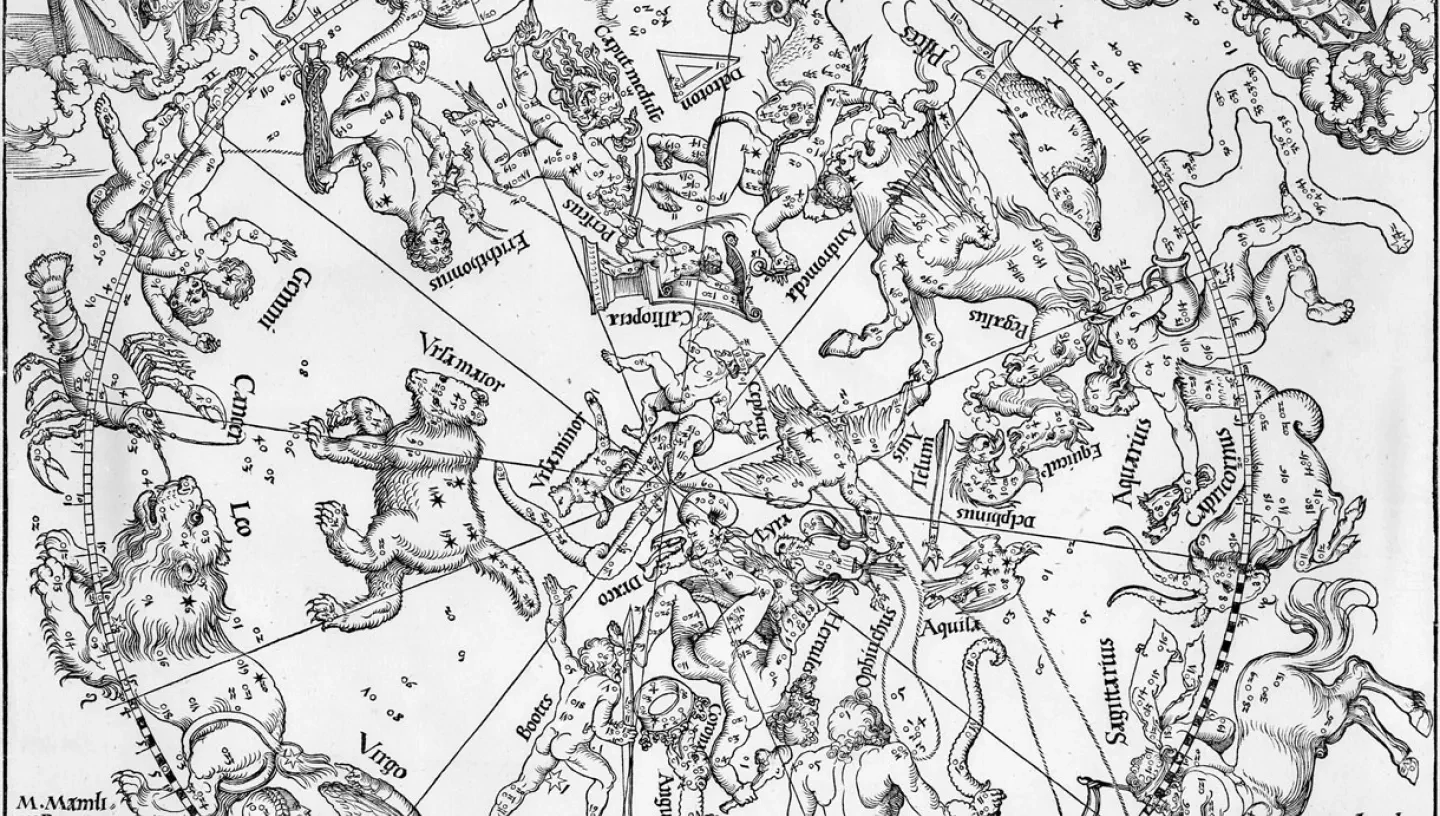
Prints held in the National Maritime Museum's collection might not be all they seem.
By Nigel Ip, Ship Portrait Cataloguing Volunteer
Albrecht Dürer is one of the greatest names in the history of printmaking. He revolutionised printmaking from simple illustrations for printed books to independent works of art. The monogram which bears his initials ‘AD’ are not only recognisable but were also extremely influential during his lifetime. Such was his reputation that he was involved in one of Europe’s earliest lawsuits concerning copyrighted material and intellectual property, a case which he won against the Italian engraver Marcantonio Raimondi who had engraved copies of Dürer’s woodcuts, complete with his famous monogram. Many other European printmakers emulated his monogram using their own initials, such as Heinrich Aldegrever, attesting to his profound impact on the printmaking scene.
The National Maritime Museum owns two large woodcuts by Dürer (G200:1/6A; G200:1/6B). These are star charts depicting the constellations of the northern and southern hemisphere, made around 1515 when he was already the official court artist to the Holy Roman Emperor Maximilian I.
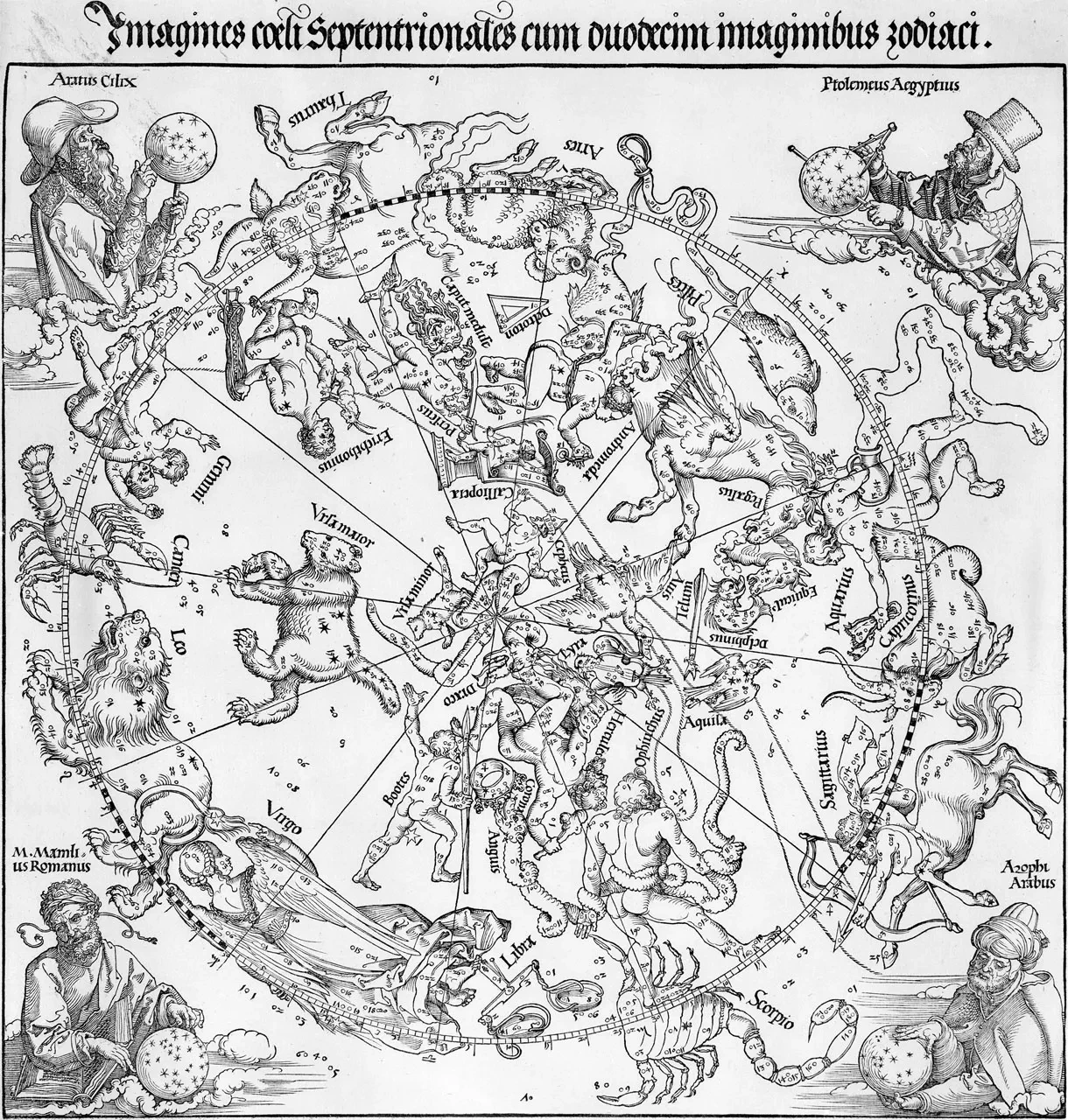
Also, previously listed under Dürer’s name was an engraving of many ships at sea (PAF7416), catalogued as being an unidentified battle scene. His monogram appears at the top-right corner, accompanied by an indiscernible date. The course of history has damaged the engraving considerably and many repairs can be found across its surface. However, Dürer is not known to have made any engravings of maritime subjects, despite his frequent sojourns to Italy.
The first step to solving this mystery was to identify another impression of the engraving in other collections. As luck would have it, the British Museum owns an excellent impression (1974,0406.12), allowing us to see clearly areas of the image which have suffered in our version.
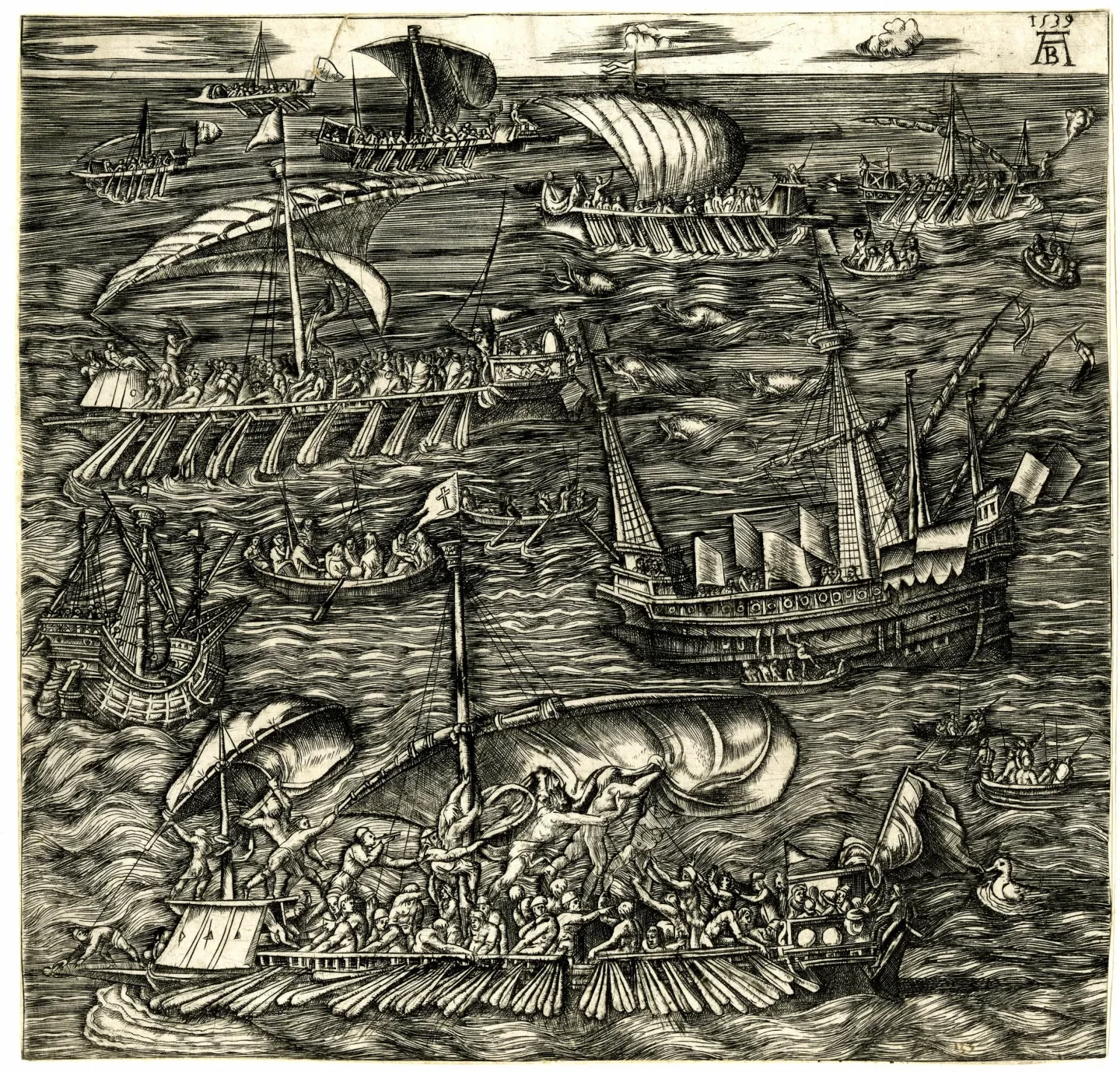
The most shocking revelation was the difference to the monogram. Instead of having the initials ‘AD’, the original monogram shown in the British Museum version bears the initials ‘AB’; the engraving has thus been re-attributed to the anonymous Monogrammist AB. The ‘AD’ on our version is in fact the product of a repair, where the bottom half of the original monogram was lost. Presumably without reference to another impression, the restorer altered it to look like Dürer’s monogram, leading to its misattribution.
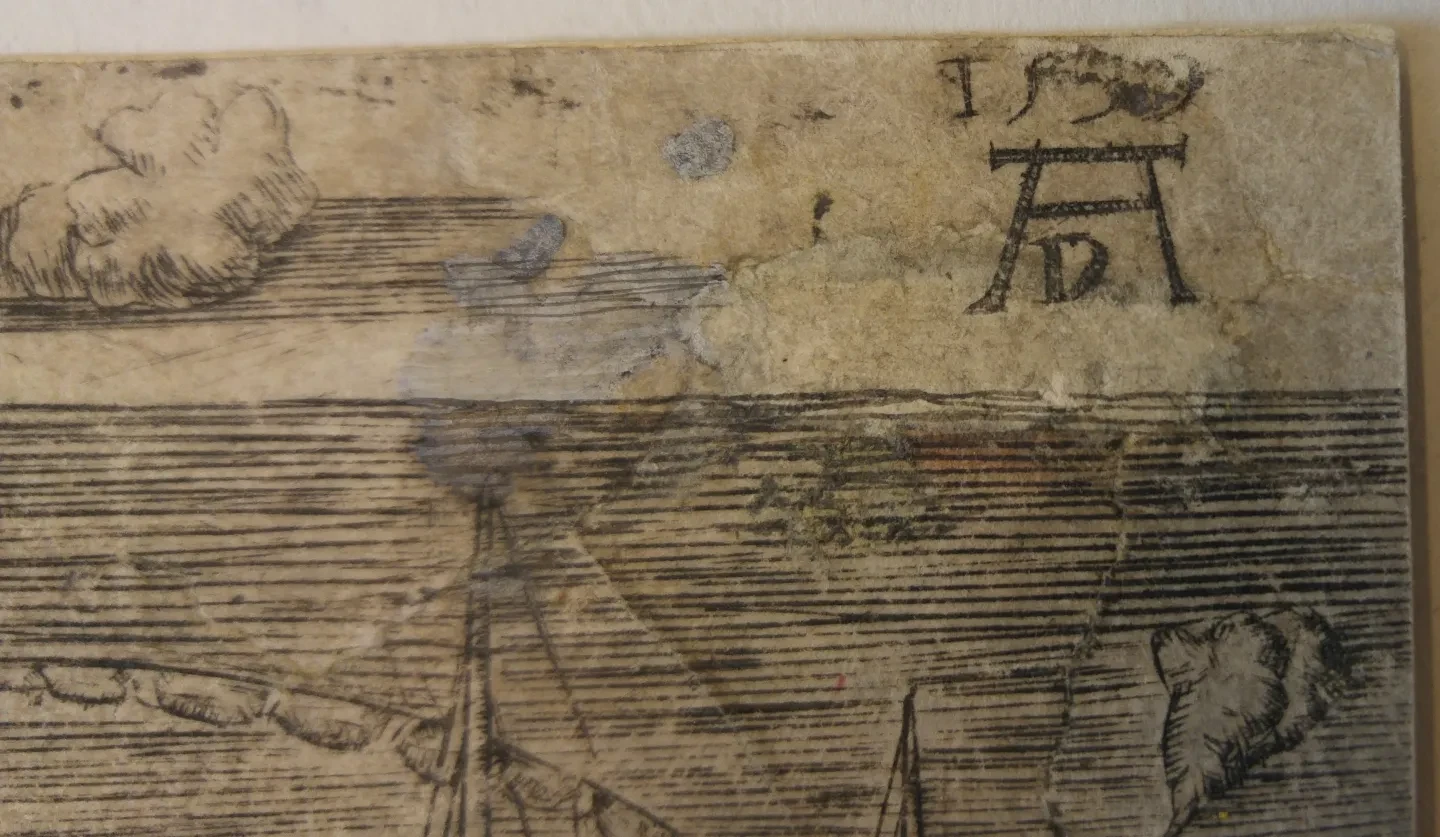
Next, we had to identify the subject of the engraving. The time-consuming effort and manual labour required to make prints meant that they were seldom made without purpose. The advantage of prints was that they had the potential to distribute artistic ideas to a wider public than any other art form. Therefore, their narratives and subjects needed to be easily recognised and understood by a non-intellectual audience.
Prints of maritime subjects typically fall into one of two categories: ship portraits and records of historic events. The former is usually accompanied by an inscription that identifies the depicted vessels. This is not the case with our mysterious engraving. Therefore, we can assume that it may depict a historical event.
Most of the ships represented bear a resemblance to Ancient Greek oared triremes so we can comfortably determine that the event took place in the Mediterranean. Three major sea battles stand out as being among the largest naval engagements in the sixteenth century: the battles of Preveza (1538), Djerba (1560), and Lepanto (1571). These battles, part of the Ottoman-Habsburg Wars, were also recognised for the participants’ decisions to fight almost entirely with rowing vessels. The most notable of these were great galleys and fustas and our engraving features many such vessels, alongside two modern-looking sailing ships; these may depict a carrack – like the famous Mataró model in Rotterdam – and a four-masted warship or galleon.
Given that the engraving is dated 1539, it is likely to be a depiction of the Battle of Preveza in 1538. The battle was fought between the Holy League – a Christian alliance led by the Genoese admiral Andrea Doria, assembled in February 1538 by Pope Paul III, comprising of the Papal States, the Republic of Venice, the Maltese Knights, Spain, and the Republic of Genoa – and the Ottoman fleet, commanded by Hayreddin Barbarossa; the Ottomans won the battle.
Curiously, the great galley at the bottom of Monogrammist AB’s engraving also features in simplified and mirrored form on an engraved map of the Ambracian Gulf (circa 1540; Bibliothèque nationale de France, département Cartes et plans, CPL GE DD-2987 (6043), eighteenth-century impression), attributed to the Spanish engraver and publisher Antonio Salamanca. The Battle of Preveza is clearly being portrayed, bombarded by galleys near the centre of the image where the city lies.
Distinguishing between the Christian and Ottoman ships poses some problems in our engraving. Not only did they use similar ships in the actual battle, there is also a lack of identifiable attributes in the image, unlike our painting of the Battle of Lepanto (BHC0261). However, two of the great galleys are likely to belong to the Christian alliance based on their ornamentation. The first is the galley at the bottom which flies a swallowtail-shaped masthead pennant bearing a cross. The second is the galley positioned directly above this flag; a panel on the side of the stern contains three figures. The winged figure in the centre is likely to be Cupid, the Roman god of desire and love. It is possible the other two figures represent Mars, the god of war, and Venus, the goddess of love. This use of Roman mythological imagery would lend support to the galley as being part of the Christian alliance.
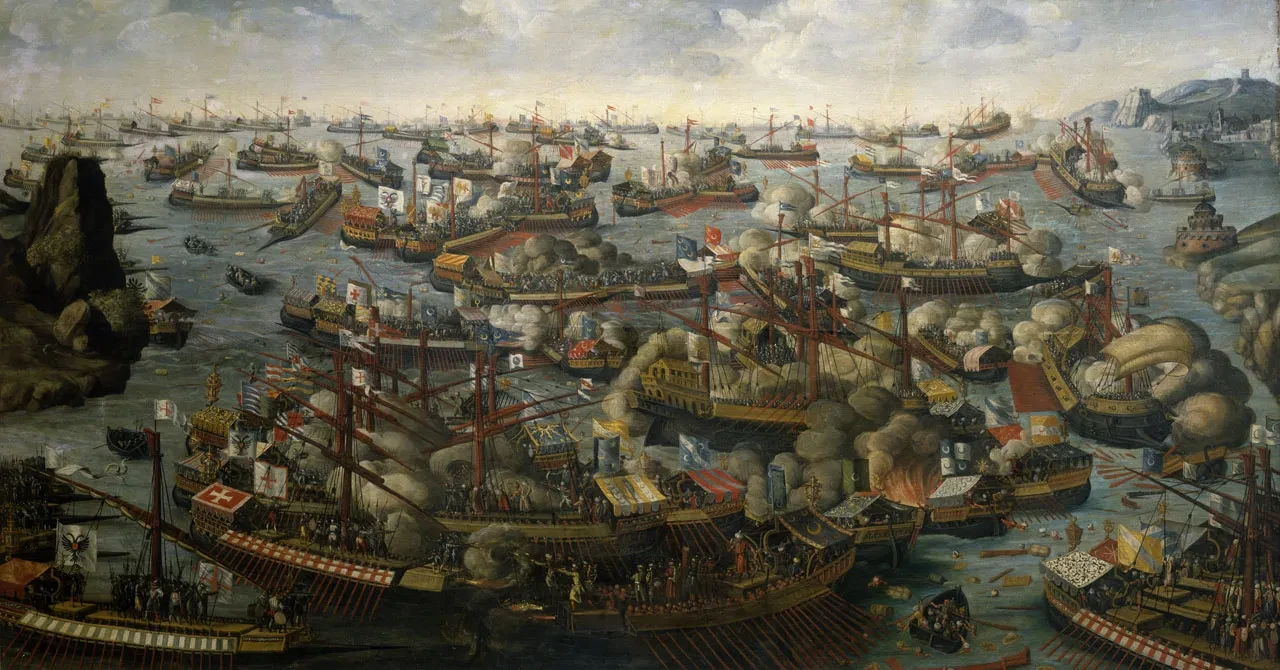
Miscellaneously, the engraving also contains a shoal of stylised dolphins and a duck. The reason for their presence is difficult to determine. Images of sea creatures and monsters (real or mythical) are best known for inhabiting the oceans of maps and atlases, usually fulfilling one of two roles. The first is to serve as graphic records of literature about sea monsters that were considered by contemporaries as being exotic and astonishing, such as being mentioned in myths or books about natural history. The second is to serve purely as decoration, enlivening the image with depictions based on medieval bestiaries, manuscripts, and sometimes classical imagery. Both roles contributed to an overall awareness and fear of dangerous creatures at sea and their marked locations can sometimes serve as ‘danger zones’ for sailors.
Our engraving represents only a tiny fraction of objects in international collections which have remained unnoticed and hidden behind the spotlights of their star exhibits. Oftentimes the story they tell isn’t as straightforward as one would hope. What was once assumed to be a print made by Albrecht Dürer can now be rightfully attributed to its original creator. In doing so, we have also uncovered the damaging act performed by a careless restorer. Most importantly, careful examination has enabled this print to be reconnected with the warring past of which it commemorates. It just goes to show that there is always more than meets the eye.